If you’re navigating the world of goldfish ownership and find yourself concerned about their health, you’ve come to the right place.
This guide is designed to demystify common goldfish diseases and illnesses, offering you practical advice on diagnosis, treatment, and, importantly, prevention—without the hefty vet bills.
Whether your goldfish is the picture of health and you’re keen to keep it that way, or you’re troubleshooting potential health issues, we’ve got you covered.
From nutritional advice to environmental care tips, we’ll walk you through the steps to ensure your goldfish enjoys a long, happy life swimming in your tank. Let’s dive into the world of goldfish health together!
But first, I highly recommend these products for optimal fish health:
|
Best For Treating Bacterial Infections
|
||
Contents
Dropsy
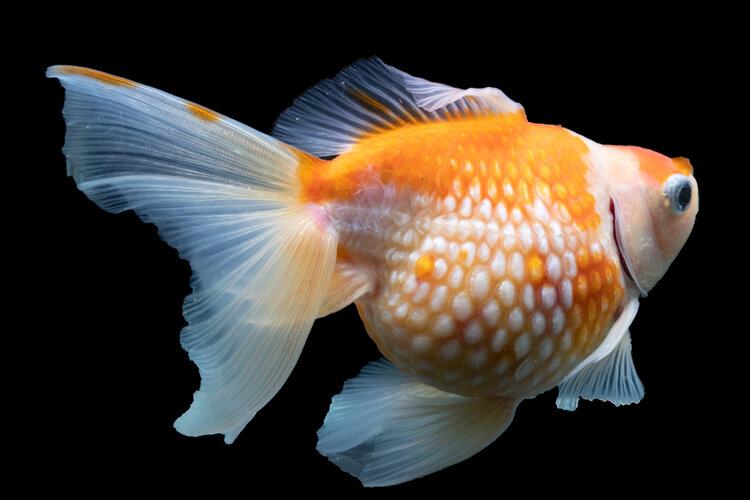
Dropsy is not the full name of the disease. In today’s society, Dropsy is commonly referred to as Ascites, a collection of fluid in the internal organs. Dropsy is often caused by an accumulation of waste from the kidneys.
Dropsy isn’t the actual disease. However, a common symptom of Dropsy is belly swelling. If you see a swollen belly, there is a 90% chance of kidney failure.
The phenomenon that causes Dropsy is called Aeromanos. Ascites are a goldfish bacterial infection that occurs only when the fish’s body is stressed or weakened. Poor water quality, with spikes in ammonia, and nitrites, among other issues in your goldfish tank, can cause this illness.
If your goldfish has already developed dropsy, you can start their treatment by putting them in an isolated tank. It doesn’t need to be well kitted out, with the only essential needs being the primary filters and aerators.
After that, you should start giving medicated food to your goldfish. Try antibiotics like minocycline or kanamycin at first. Add a little bit of aquarium or plain Epsom salt into the water.
That will help too.
Neurofibroma
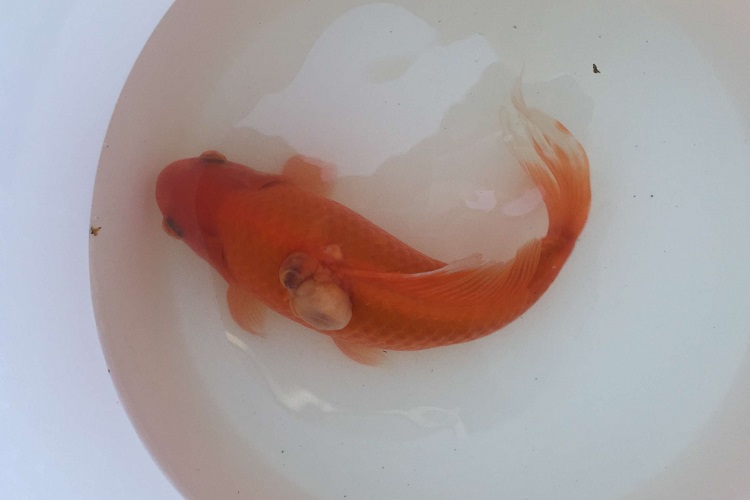
Neurofibroma is a tumor commonly associated with goldfish. This type of tumor causes localized skin and fin lumps that grow large, fall off, and then regrow. Neurofibroma is a benign tumor that causes no harm or distress to your goldfish.
The most effective way to remove the deep-lying tumor from your fish is by surgical removing it under anesthesia. This type of treatment has the biggest rate of success.
There is also a treatment that uses medication. However, it is not recommended due to its low success rate and possibly harmful side effects.
The cause of the occurrence of Neurofibroma, like any tumor, is due to the overexpression and replication of a cell. However, instead of killing the rogue cell, the fish’s natural defense allows it to replicate. Therefore, the tumor is formed in the fish’s skin or fin.
Unfortunately, there is no way to prevent a tumor in your goldfish. Neurofibroma is a genetic goldfish disease. However, good water quality and good food are good starting points for preventing infections.
You can also observe your goldfish daily and contact your veterinarian if you feel something is amiss.
Fluke
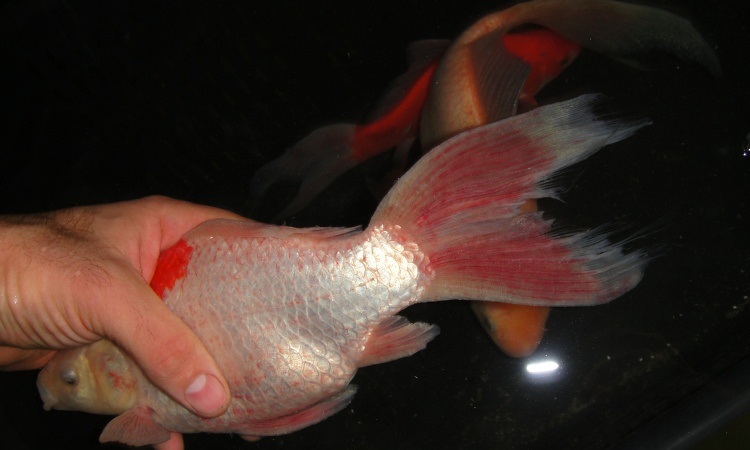
Fluke is a kind of parasitic infection that attacks both the body and the gills of your goldfish. They can occur if the fish has a poor diet or the water quality is not very high.
Both body and gill Flukes are very dangerous for your goldfish. If untreated, they will kill the fish and infect the entire tank.
You can usually tell if your goldie has Fluke if you see that the goldfish is scratching its back against the glass, has rapid breathing, and has mucus on the gills and body. Also, their skin may turn red, and their bellies can get sunken.
The hardest part of Fluke treatment is in making the correct diagnosis. Without a microscope, gill Flukes are practically undetectable. Therefore, you must eliminate the other most common goldfish diseases for your Fluke treatment to succeed.
However, if you are sure your goldfish has Fluke, disconnect the biological filters of your fish tank. After that, buy Droncit and add three and a half pills per 10 gallons of water.
You must kill all the parasites in the tank and the fish. Repeat this procedure until you are sure that the fish’s skin and gill are clean.
To prevent this goldfish illness from appearing in your fish tank, quarantine every new fish before putting it with the others. Sick fish will rapidly infect others if you do not quarantine them first. Once you are sure the fresh fish is clean, you can add them to the tank with the rest.
I highly recommend this nutritious and balanced daily diet for goldfish to keep your pets in peak condition:
Anchor worm
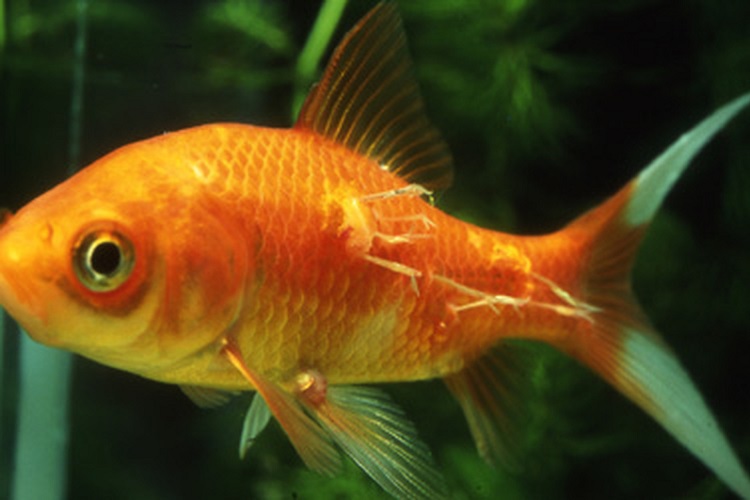
Anchor worms got their names after the shape of their head. They burrow their heads into the fish’s bodies and feed on their blood. Anchor worm is not a disease. Instead, it’s a goldfish parasite commonly located near the pectoral or dorsal fin.
The most common way for your goldfish to get an anchor worm is from another fish. If you want to prevent an infection from spreading across the whole tank, inspect the new fish closely before putting it with other fish and quarantine it before introducing the fresh fish into the tank.
The easiest way to combat these parasites in a goldfish tank is to pick them off with a pair of tweezers. However, be careful if the worm is next to the fish’s eye. After the treatment, place the fish into a small mild salt bath to combat any infections in the new wounds.
After placing them in a bath, you can treat the aquarium with Diptera solution. It will kill the remaining parasites, but their eggs will survive. Therefore, you’ll need to complete the treatment after another seven days to kill off all the eggs.
I highly recommend this product for treating bacterial fish infections and killing parasites quickly:
Fish Lice
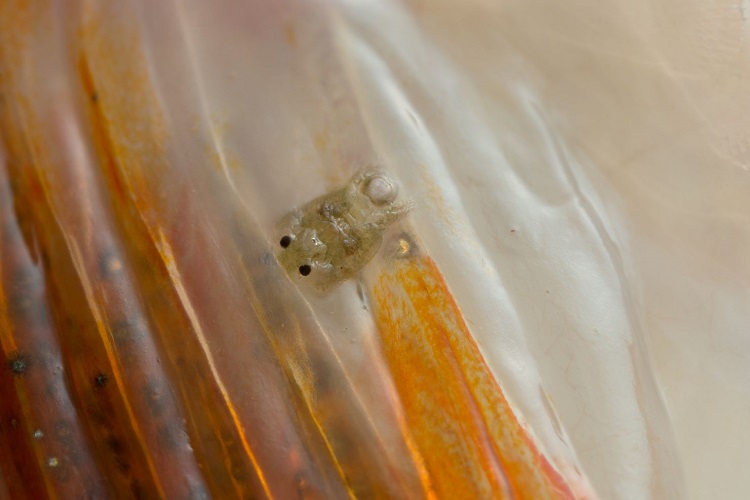
Goldfish lice, which are actually crustaceans, can get to 3-4 mm when fully grown. It’s translucent and hard to see without a microscope. Their heavy infestation is a common goldfish disease. If not treated properly, it can lead to massive blood loss and even death.
The most common sign of an infestation is when you see your fish rubbing themselves against any available objects in the tank. Such behavior can lead to missing scales and injuring fish’s fins.
Lice can get into the aquarium with new fish you introduce to your tank. However, plants and other objects brought from the wild and put into the aquarium without proper sterilization can lead to a fish lice infestation.
You should sterilize the aquarium for the best treatment to remove all parasites from the fish’s skin. Then, you need to get the fish into another aquarium and fix the big one with Diptera. While the pesticide is doing its work, you need to kill all the parasites that stay on your fish.
You can dab the lice with a cotton bud dipped into a solution of Kerosene and Turpentine. Just be careful not to get it on the mouth, eyes, or gills. After that, put your goldfish into a quick salt bath, and then they’ll be ready for the giant aquarium.
Fin Rot

Fin rot is one of the most common goldfish diseases caused by bacterial infections. It attacks the fins and, if left untreated, can cause the complete disappearance of fins and the eventual death of the fish.
The bacteria that cause this goldfish disease are always present in the aquarium. However, improper feeding of your goldfish or poor water conditions can cause the bacteria to become active. Another reason that activates this bacteria is long periods of cold temperature in the aquarium.
The best treatment for this goldfish disease is moving the infected fish into a bath of non-iodized salt. The concentration should be no more than two teaspoons per gallon. After the bath, trim the damaged part of the fin with a razor blade or a pair of scissors.
Alternatively, use a bath that contains 250 milligrams of Tetracycline per gallon for a week. After a whole day in this solution, let the fish rest in a mild salt bath.
Ulcers
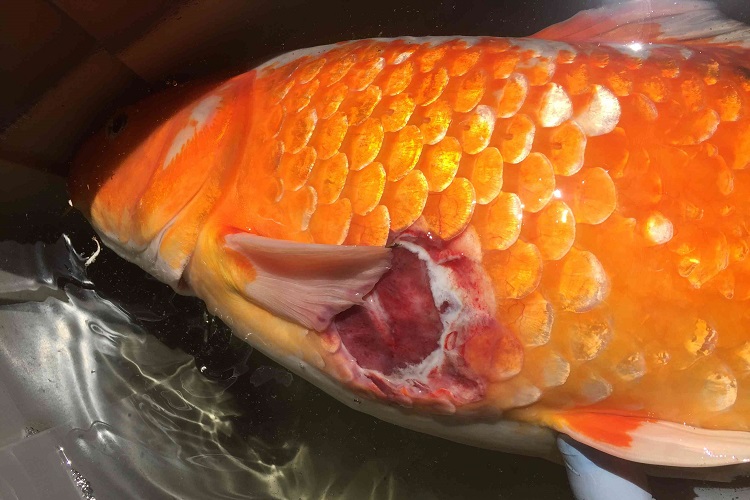
Most fish get this disease if there is an injury to the fish that gives the bacteria that causes ulcer an opportunity to penetrate through the fish’s protective slime coating.
Usually, Ulcers come in tandem with parasites that penetrate the skin and provide the bacteria with plenty of flesh to work with.
Ulcers can be diagnosed by their appearance. They look like an open sore of a pink/red color. Do not confuse it with ulceration of the gills, an illness that is part of a family of fungal diseases. An ulcer can kill the fish if left without treatment for an extended period.
Before treatment, you should make sure there aren’t any parasites on the fish. After that, it’s essential to understand that Ulcer treatment comes in three phases. First, you need to buy a hydrogen peroxide solution and treat the ulcer with a cotton bud.
After removing all the dead material, put the fish in a salt bath to kill all the remaining parasites and prevent fungal attacks. When you are finished with the salt bath, pick up some Melafix, Malachite green, Methylene blue, or any other antibacterial medication that can be added to the water.
To prevent the apparition of Ulcers, take consistent note of the quality of water. If your water quality is high, feed your fish regularly with live and frozen food and take care of their general health. This will prevent any parasites or ulcers infection.
I highly recommend this product for treating and eliminating ich effectively and quickly:
Fungus
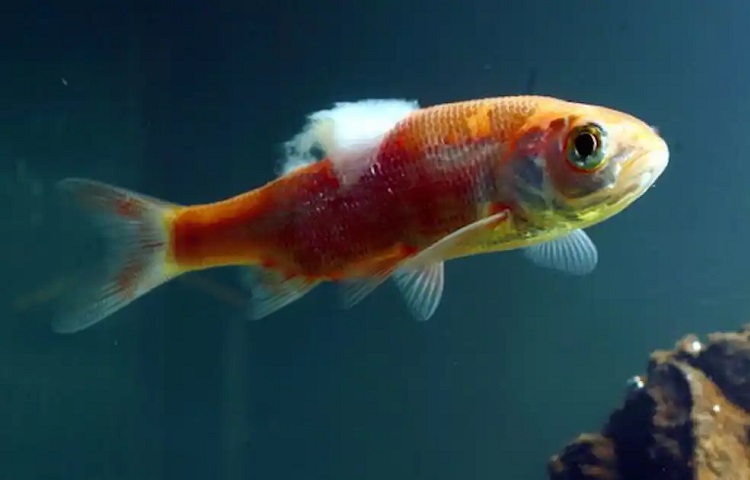
Fungus disease is one of the most common goldfish diseases. Fungi infections usually occur in injured, stressed, or poorly looked after fish.
Fungus usually appears on the body or fins, and its appearance represents a patch of white cotton wool. If you don’t treat your fish, the fungus will spread from the skin to muscle and internal organs. An untreated fungal infection can be lethal to your fish.
In order to treat fungus, bathe your fish in a solution of un-iodized salt. However, if your fish is fragile, first add the fish to a weak solution. Start by adding the salt gradually, and when you reach 10 grams per gallon, leave the fish to stay there for a short period and observe their behavior.
After the treatment is completed, feed the fish live food to help it recover faster. To prevent this common goldfish disease, you need to keep it well-fed and maintain high water quality in the tank.
Carp Pox

Although Carp Pox is not a life-threatening disease, it should not be ignored. Like other infectious diseases, Carp Pox can be spread by introducing new fish that are added to your goldfish tank.
The most common signs of Carp Pox are the thickening of the epidermis on the fins and the traditional candle wax lesions. However, other infections can show the same symptoms, so your veterinarian’s further examination will help identify the disease.
There is no treatment for Carp Pox. Nevertheless, you can slow down the infection by strengthening your fish’s immune system. The best way to do that is by keeping a high temperature in your aquarium, giving high-quality food, and treating your fish with all the medications required.
You can prevent this disease by ensuring all new members of your aquarium complete a quarantine period. Most fish get infected due to the introduction of unhealthy fish into the aquarium. After that, it’s only a matter of hours before a completely healthy fish gets sick.
Cloudy Eye
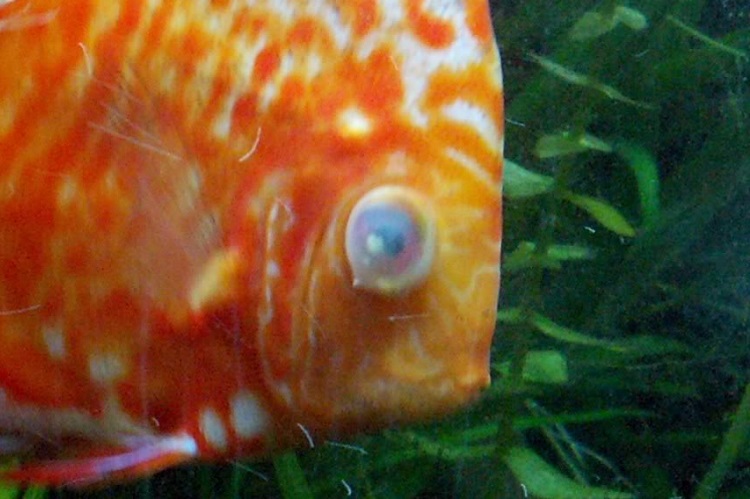
The Cloudy eye is a common disease for tropical fish, including goldfish. It attacks the fish’s eye and has various causes, from internal parasites to mechanical damage to the eye and poor water quality.
Fish infected with this disease often lose their sight and can even be seen swimming upside down due to the lack of coordination. However, the most notable symptom is a thin white film covering the entire eye.
To get rid of the cloudy eye, you should do several things. First, make sure the fish is not infected with bacteria or internal parasites. Cloudy vision is one of the most common goldfish diseases and often comes together with other diseases.
With that in mind, the first thing you should do is treat other diseases before treating the cloudy eye.
To prevent this disease, you must improve or maintain good water quality, remove all the sharp objects that can hurt the eyes of your goldfish, and ensure a healthy diet.
How to Identify a Sick Goldfish?
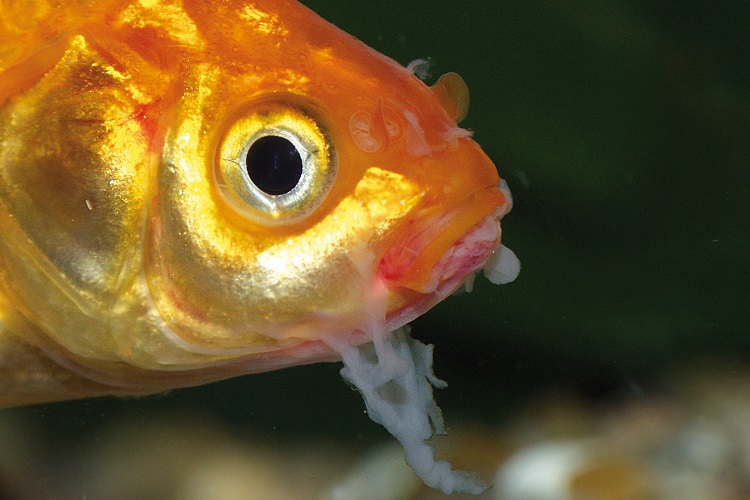
If your fish eats, swims, and usually acts, you have nothing to worry about. However, consider these red flags if your fish doesn’t eat their food, is gasping for air, or is rubbing its scales on random objects.
The signs are different in different situations and for other illnesses. You can observe diseases with just your eyes (tumors, ulcers, and even parasites.)
Nevertheless, there are internal problems you can’t see, which is why it’s essential to look after your fish and observe every minor detail.
You can also check the water quality to identify a sick goldfish. Poor water quality can cause the majority of illnesses above. Therefore, if your water quality isn’t looking good, there is a big likelihood that your fish will become sick.
That is why you should conduct tests of your water at least once a month to ensure no ammonia, no nitrates, and no other chemicals that could be harmful to your fish’s health.
What Are the Signs of a Dying Goldfish?
If your fish doesn’t eat at all, barely moves, or has missing scales, you should seek help for your fish quickly. Also, if its swimming behavior is different, it could mean that it is stressed and overwhelmed by pain or suffering.
Another sign is clamped fins. They are damaged, or your goldfish has internal issues.
How Can I Use This Information For My Fish?
First of all, if you have a healthy goldfish, you need to take all the proper measures to prevent all the illnesses described above. You should bear in mind the fact that, even if there is a cure, there is no guarantee that your fish will survive. There are often cases when no medication will help your fish.
If your fish is already sick, then it has to be treated. Follow all the guidelines above and reach out to a veterinarian if they don’t help.
However, the illnesses listed here are the most commonly seen with tropical fish. Hence, their treatment is not as complicated as it may seem. The key is to make the diagnosis quickly and correctly.
FAQ: Ensuring the Health and Happiness of Your Goldfish
1. How can I tell if my goldfish is sick and what are the initial steps I should take for treatment?
Identifying a sick goldfish often involves noticing changes in behavior or appearance, such as decreased appetite, lethargy, unusual swimming patterns, or physical symptoms like spots, fin damage, or swelling.
If you suspect your goldfish is unwell, the first step is to assess and improve tank conditions by checking the water quality for ammonia, nitrites, and pH levels.
Often, correcting environmental factors can significantly impact their health. For specific symptoms, consulting this guide can help you determine potential diseases and treatment options.
Isolating the sick fish in a quarantine tank and starting with general supportive care, such as ensuring clean water and possibly adjusting the diet, can be beneficial while you identify the exact issue and treatment plan.
2. What are the best practices for preventing common goldfish diseases?
Preventing diseases in goldfish primarily revolves around maintaining a clean and stable environment in your aquarium. Regular water changes, adequate filtration, and monitoring water parameters (temperature, pH, ammonia, nitrites, and nitrates) are crucial.
A balanced diet tailored to your goldfish’s needs—combining high-quality commercial food with occasional fresh, live, or frozen foods—supports their immune system.
Additionally, minimizing stress by avoiding overcrowded tanks, providing hiding spaces, and ensuring compatible tank mates can help prevent many health issues.
Lastly, quarantining new fish or plants before introducing them to your main tank can prevent the spread of parasites and diseases.

Ian Sterling, founder of Fishlab.com, began his aquarium journey over 30 years ago, driven by a deep fascination for fish and their diverse personalities. His website, Fishlab.com, is dedicated to making fishkeeping accessible and enjoyable, offering beginner-friendly guidance, expert insights, and a community for aquarists to connect and share experiences.


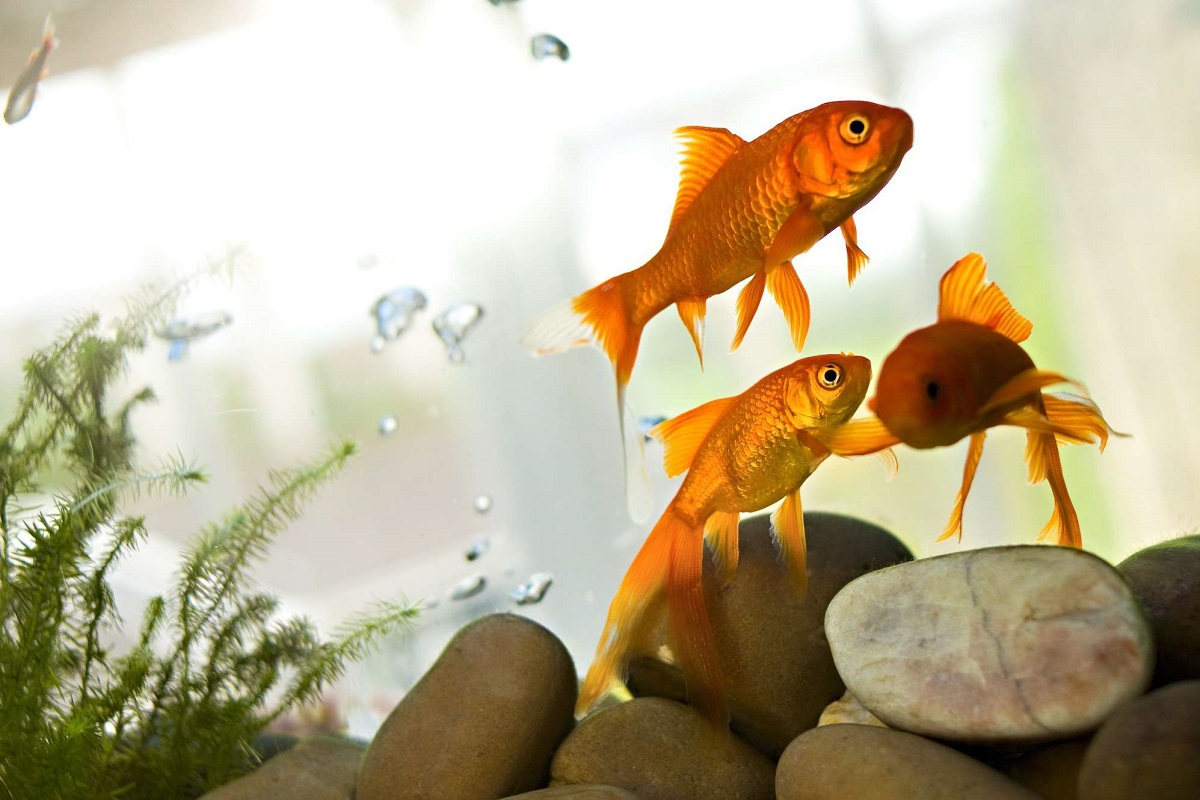
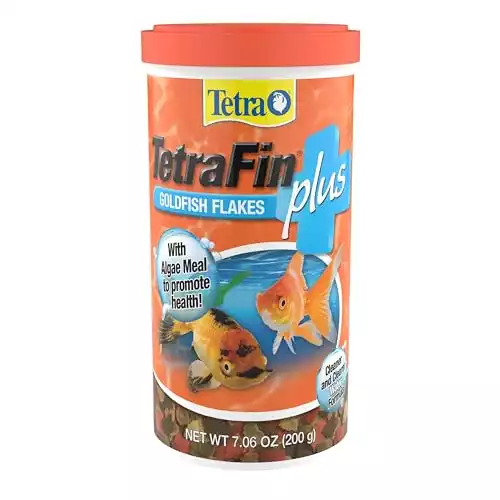

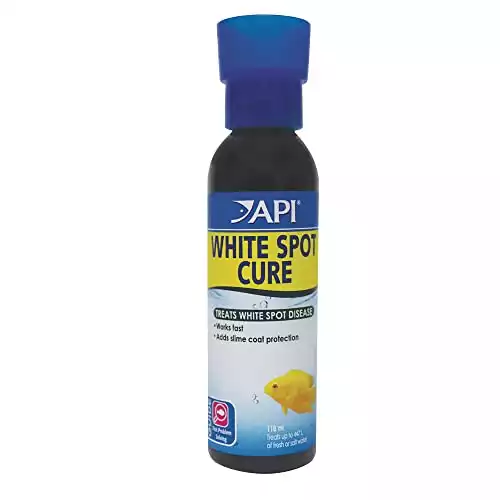
Comments (1)
We have an older goldfish (>5years), did a water change yesterday and today he has a spot on his side that looks like loss of scales & red. It doesn’t look like pictures I’ve found online for red spot disease, ammonia poisoning, or an ulcer. Could I send you a picture to help with the identification?